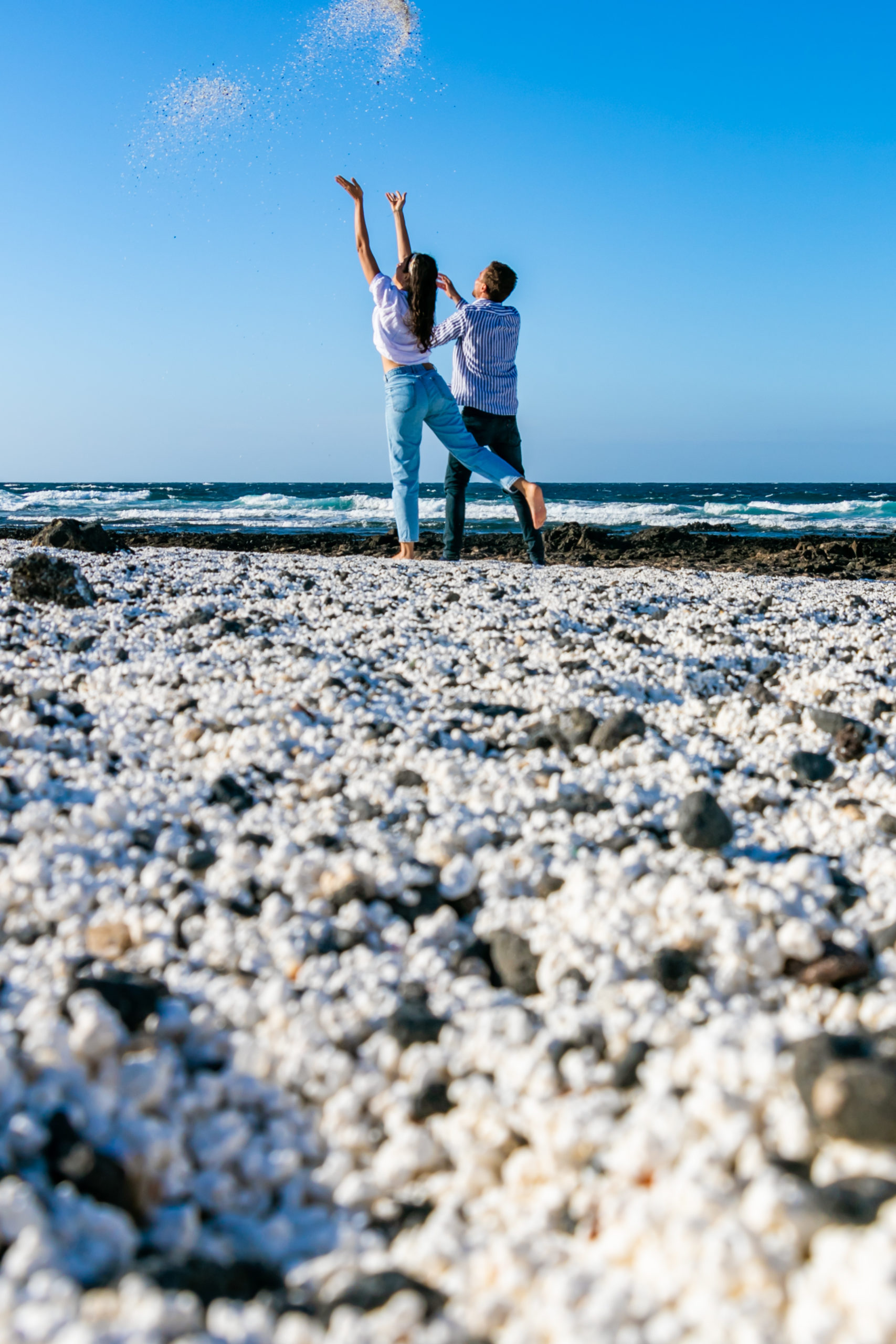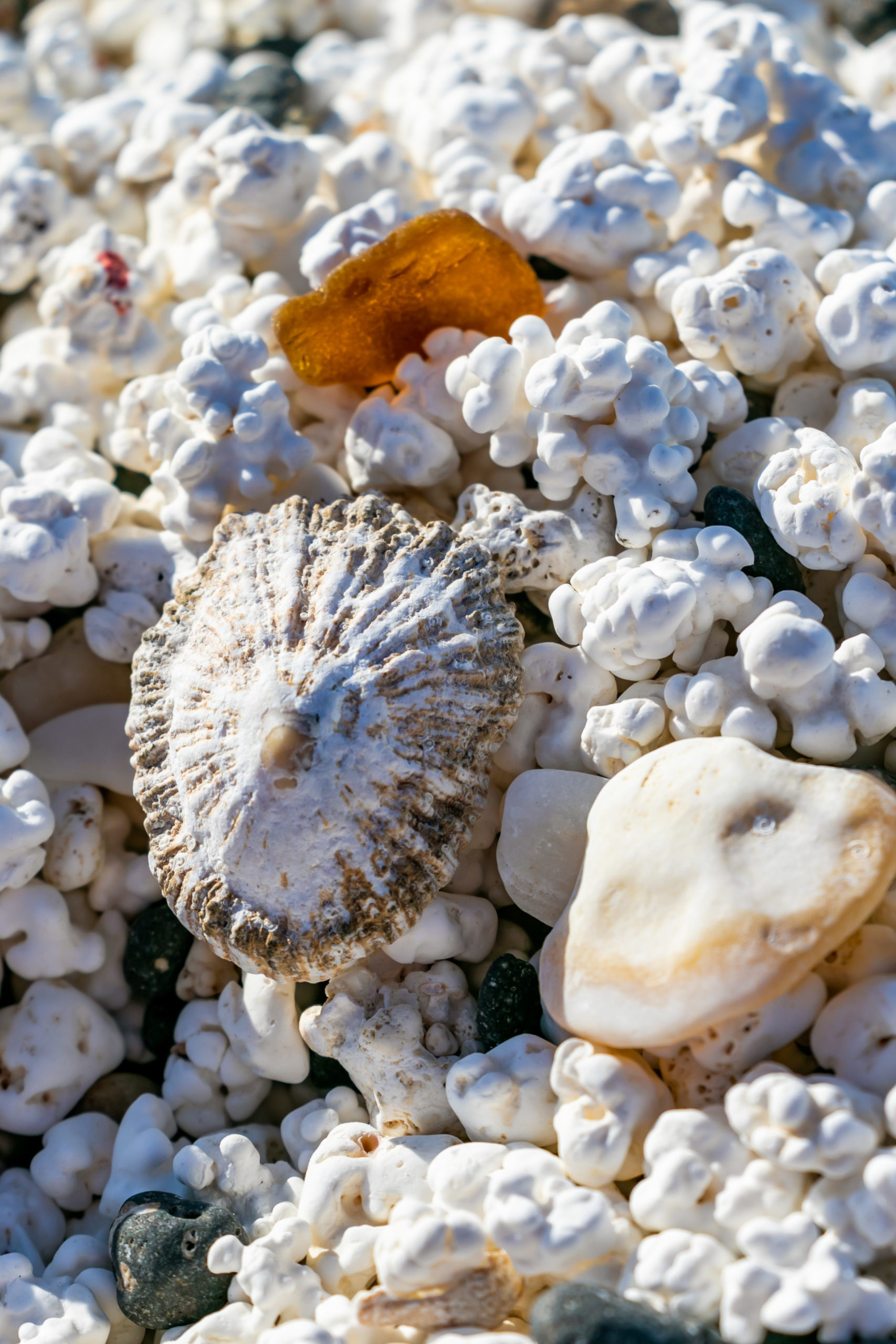Once upon a time, Popcorn Beach was frequented by pirates. Today it is home to thousands of instagrammers who love the unusual appearance of its shoreline.
The Canary Islands are known for their collection of unique natural locations. Some are known to only a handful of locals. Others are famous throughout the world. Popcorn Beach, located in the north of Fuerteventura, first went viral on social media. Then TV, radio, and newspapers picked up on the story. Popcorn beach’s is known colloquially as El Hierro beach, located in La Oliva.

Calcareous algae
Instagrammers love to pick up a piece of the popcorn like material which is spread about the shore and pretend to eat it. However, nobody should eat the white pieces that are spread out on this part of the Fuerteventura coastline. Rather than a tasty piece of heated maize, the swollen material is in fact white coral which has been made as a consequence of the intermixture of calcareous algae and white sand over a period of at least 50 years. Rhodoliths, as the scientists call the formations, grow underwater at one millimetre a year, so if a particular section measures 25 centimetres it will have been growing for 250 years. Some rhodoliths have been judged as being more than 4000 years old. A beach like El Hierro beach (or playa de la Baja de la Burra) near La Oliva can take centuries to develop its appearance.
Keep popcorn beach fun!
According to some sources more than ten kilos of coral is taken away from Popcorn Beach each month. It is vital that all visitors to Popcorn Beach remember that the white coral on the shore should never be broken up, much less put into pockets and taken home. Popcorn Beach is a fantastic space for visitors to enjoy. If everyone were to remove a bit of the beach, it would soon cease to exist.
Environmental significance
As well as its aesthetic appeal, the peculiar coral on Popcorn Beach also has very high environmental value. According to the biologist Francisco Otero who spoke to El País, the coral whilst underwater absorbs carbon dioxide from the sea in a way that helps to combat climate change. The coral is also a fabulous breeding ground for different marine species who use cavities in the formations to store their eggs.
Awareness campaigns
Due to the great environmental value of Popcorn Beach, much is being done now to protect it. Public awareness campaigns have been hosted by governmental bodies; legislation has been written to determine the appropriate sanctions for visitors that steal coral; and tourist operators have spoken directly to tourists so that they can be informed of relevant regulations. Beaches of environmental significance must be carefully protected. Responsible tourists are welcomed with open arms to Popcorn beach!

